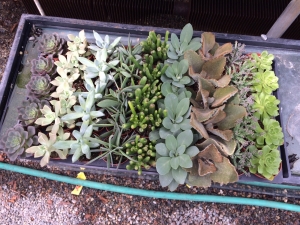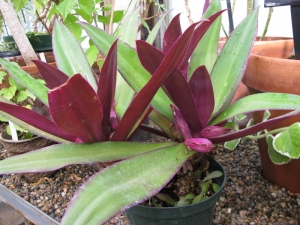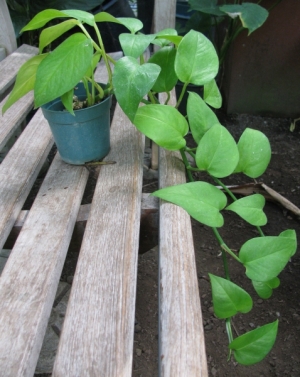Each new student arriving at Wellesley is invited to visit the Wellesley College Botanic Gardens to select a free plant from a group of easy-care houseplants, a tradition since 1985.
Fall 2023 New Student Plant Giveaway:
Tue 9/5 - Thur 9/7, 2-5pm in the WCBG Visitor Center!
Click here for plant care info for your new plants!
Plant Care Q&A
When do I water?
- Push a finger or pencil into the soil ~1 inch deep
- If soil sticks to it or feels moist ~1” below soil surface, do not water yet
- If the soil feels dry, slowly add water, until water drains out the holes at the bottom of the pot, into the saucer. Empty your saucer, if there’s excess water.
- More plants die from over-watering than underwatering. When in doubt, let the soil dry out!
How much light do I need? A south-facing window offers the most bright, direct light - use for high-light loving plants, like many succulents. An east/west facing window is suitable for plants that like medium light. North facing windows should be used for plants that can handle low light. Succulents typically thrive in bright light - for succulents, choose brightly lit areas (avoid north-facing windows)
What should I do over wintersession? Keep plants away from the radiator, and away from cold air/drafts. The radiator can dry out your plant and/or overheat too quickly, “baking” your plant to death. If you need to take your plant outside in cold weather, place it inside a plastic bag or two for protection - even short periods of chilling can injure or kill some plants. Some plants (many succulents) will not survive long below 50-60F, while others can tolerate low temperatures. Reduce watering over winter - plants will grow slower in low light and temperatures. Some plants have a dormancy period over winter and may not appear to grow at all. Consider arranging shared plant care in your res hall or with friends!
When should I repot? When the plant has outgrown its pot, get another pot ~1 inch bigger than the one your plant is now in. Make sure your new pot has drainage holes. There is a potting station with free soil/potting media in the Annex, the small white greenhouse next to the Visitor Center. We do not provide free pots, but can offer guidance. Email wcbgfriends@wellesley.edu. Re-potting in fall or spring, not winter (when many plants are dormant), is recommended.
- Push a finger or pencil into the soil ~1 inch deep
- If soil sticks to it or feels moist ~1” below soil surface, do not water yet
- If the soil feels dry, slowly add water, until water drains out the holes at the bottom of the pot, into the saucer. Empty your saucer, if there’s excess water.
- More plants die from over-watering than underwatering. When in doubt, let the soil dry out!
Wintersession Plant Care:
Ask Res Hall leaders if you're interested in organizing communal watering in your dorms - this has been successful for many years. Botanic Gardens staff can not care for student plants over winter. Good news - many plants will be fine if you follow the steps below!
No Water Needed
Many cacti and succulents like jade plants can go for months without water. Just water it before you leave and make sure it’s in a sunny spot, but not sitting on top of a radiator (a bad place for any plant).
Bag 'Em
You can make a water-recycling terrarium out of a clear plastic bag that will keep plants happy for the time you’re away. Put your open bag in a spot that gets sunlight but is out of direct sun. If you need to close blinds in your room, perhaps you and your neighbors can gather plants near a window in a central area. Arrange as many well-watered potted plants on the bottom of the bag as will fit. Pull up the sides of the bag over the plant(s), blowing in air to puff out the bag, and twist it shut on top (you can seal it with a twist tie or a rubber band). The plants inside will release water from their leaves, and the excess will drip back down onto the leaves and potting soil, where it will be available to the roots again. There are other creative ways to "self-water" plants using e.g. building a slow drip-irrigation set-up using a recycled bottle.
Moses-in-the-Cradle, Oyster plant
Rhoeo spathacea
Pothos, Devil's Ivy
Epipremnum aureum



